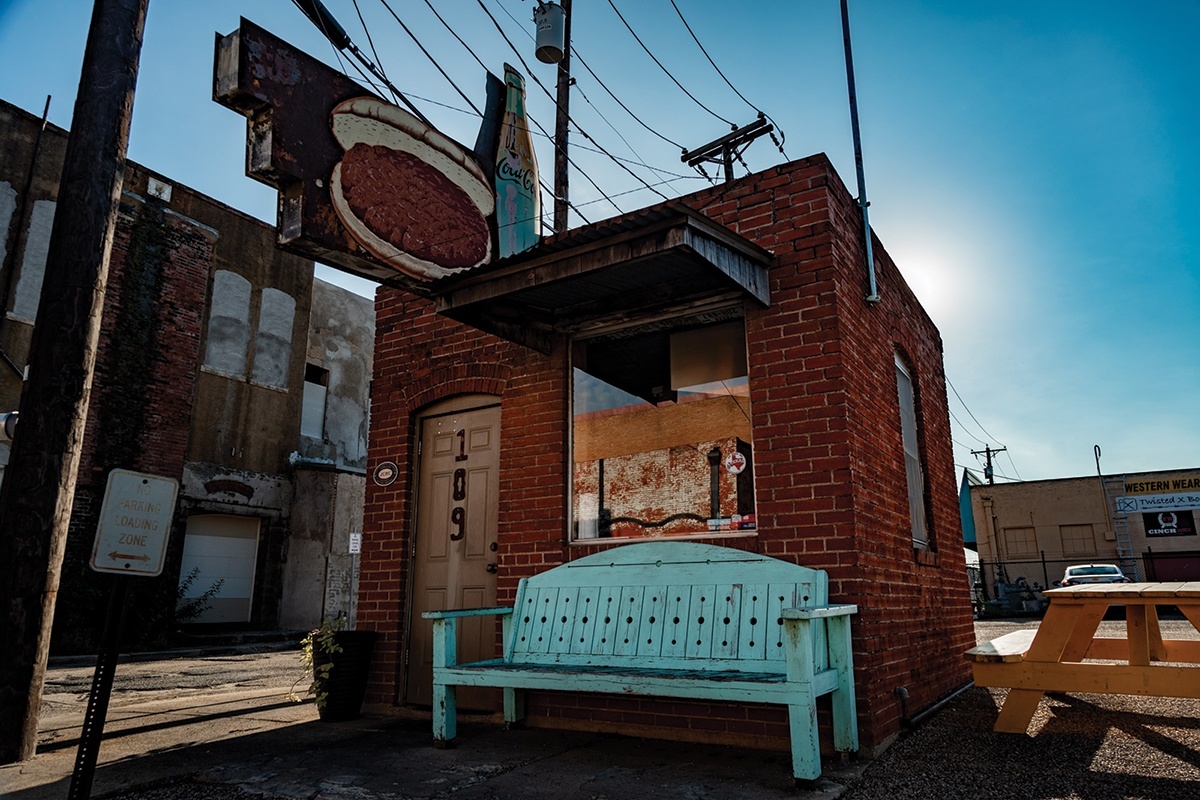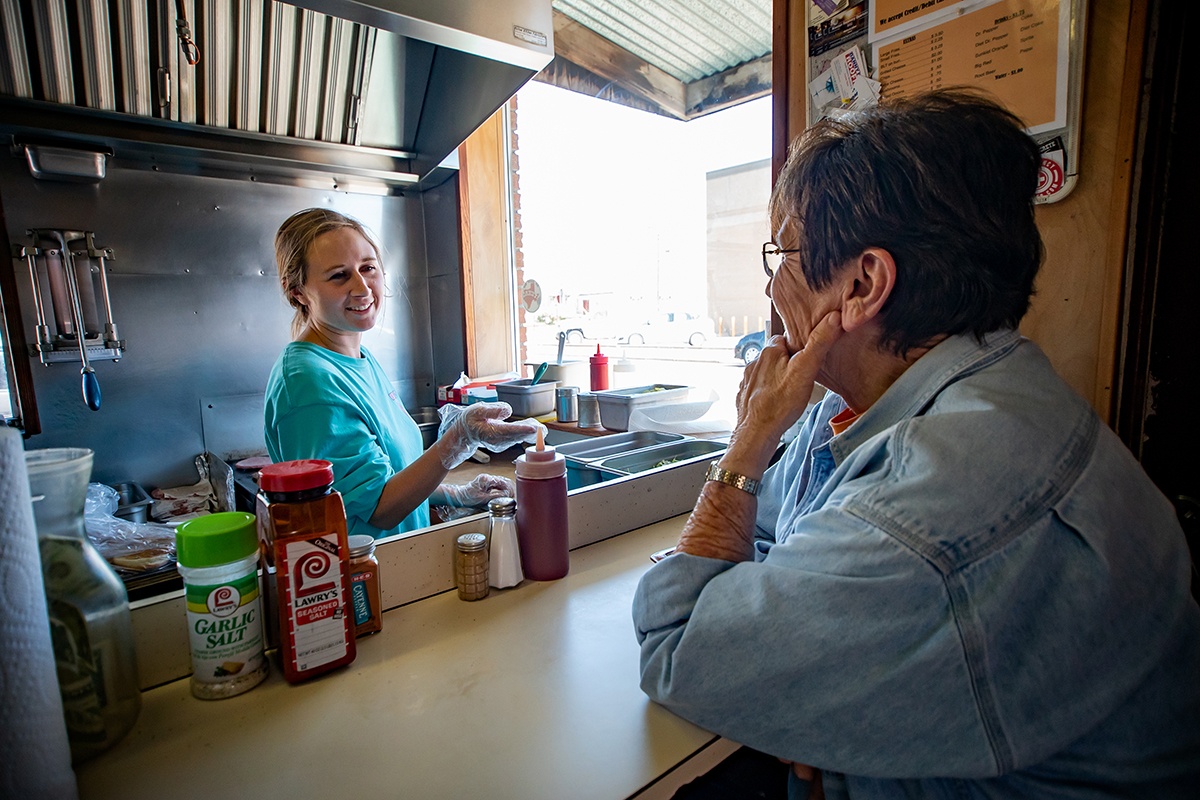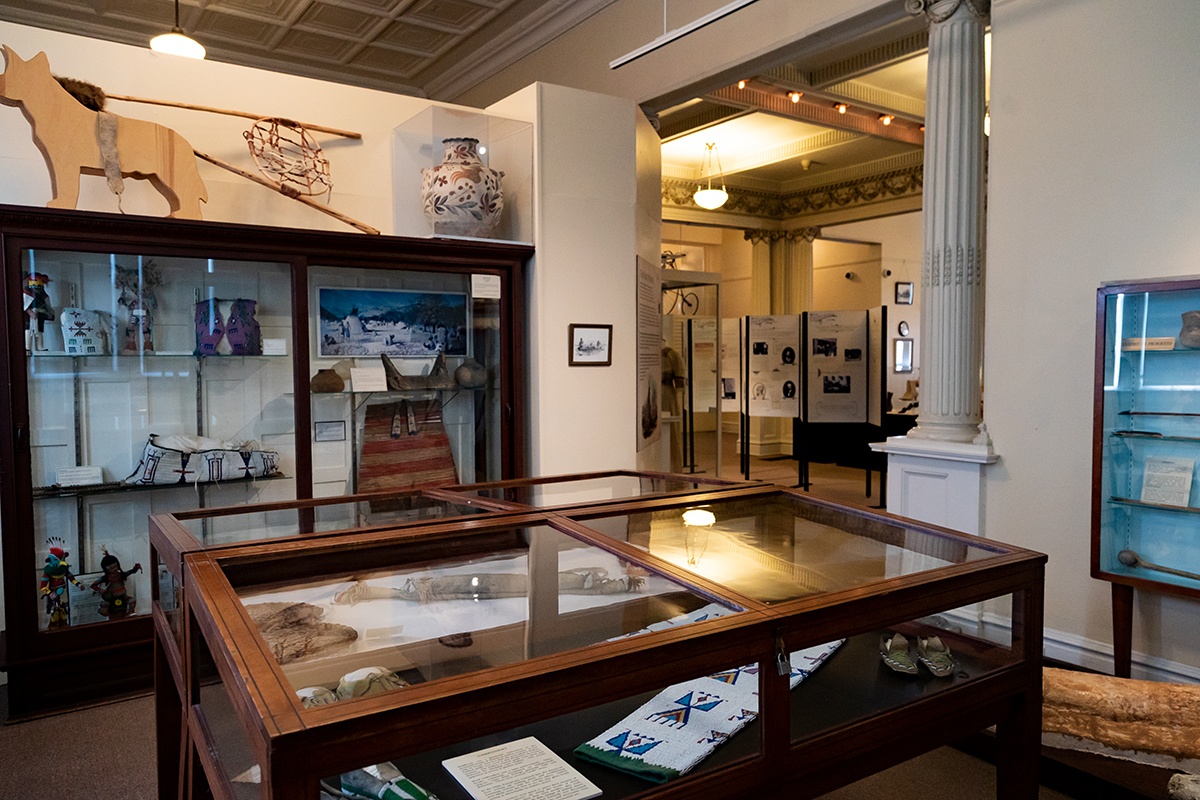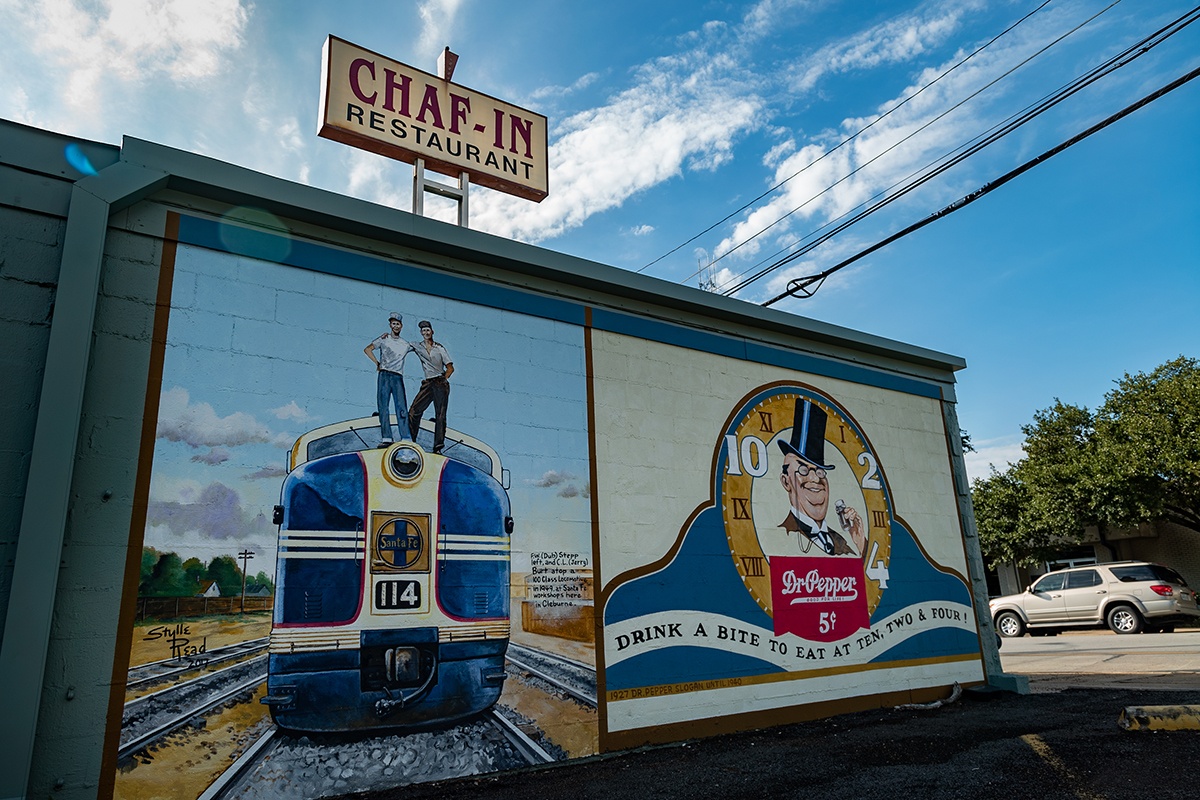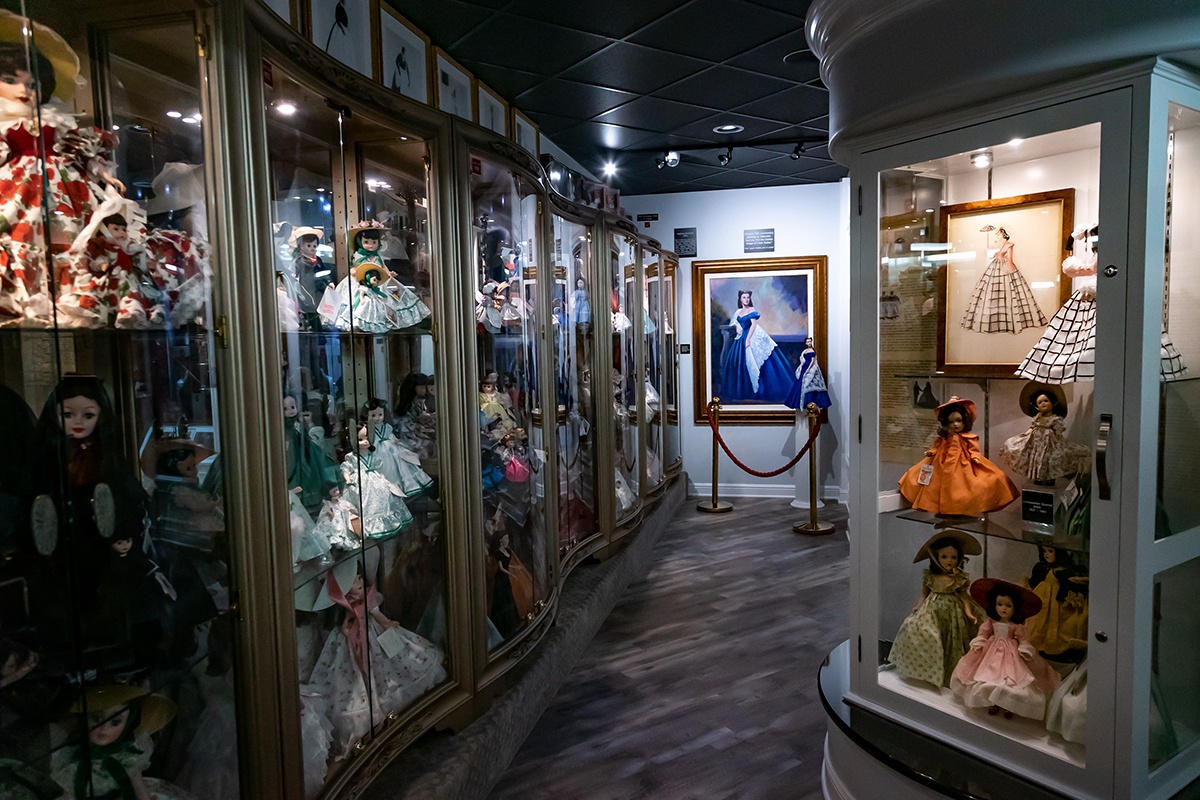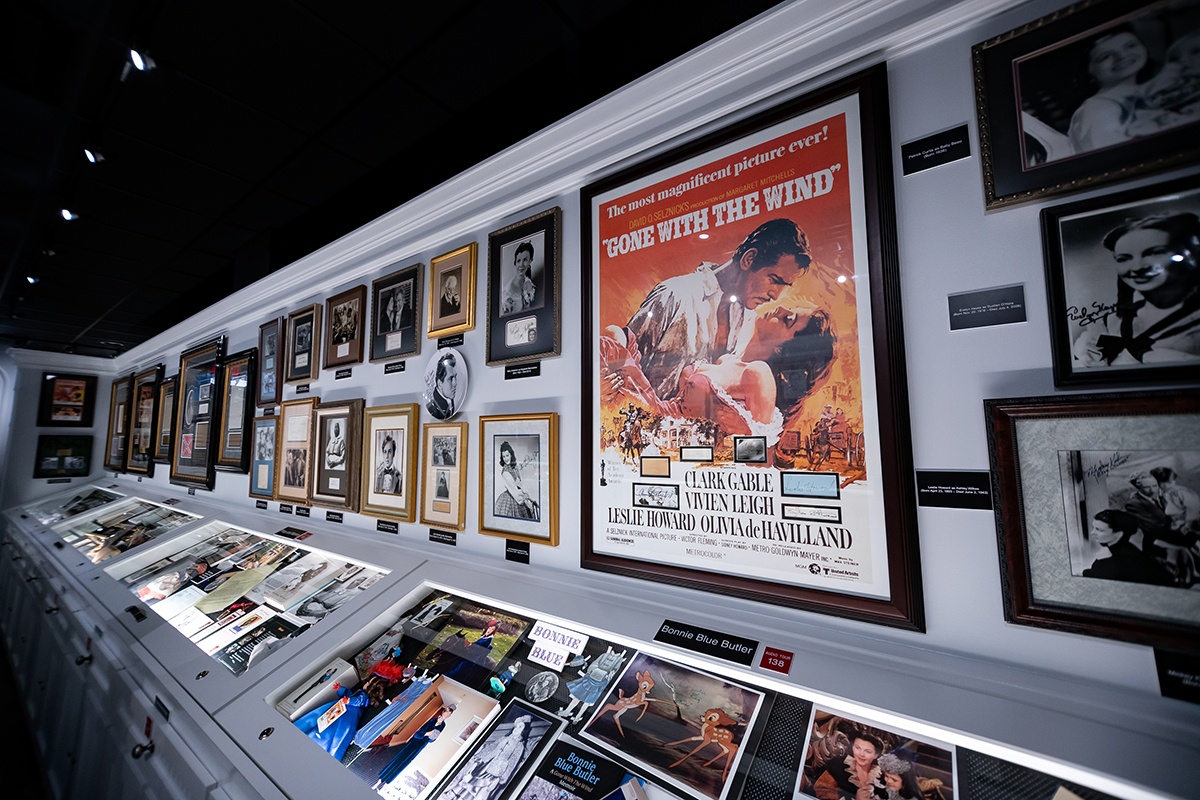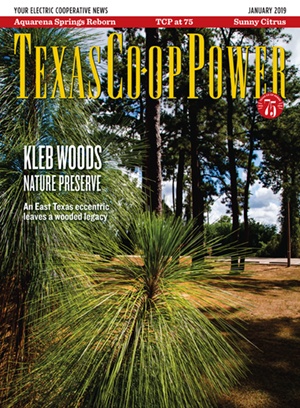As I admired the vintage storefronts around Cleburne’s courthouse square, a faded soda pop bottle and hamburger sign at the tiny Burger Bar luncheonette caught my eye. “Every couple of months, someone will stop in wanting to buy the sign,” said Katy Grantges, owner of the beloved eatery. The minirestaurant’s building dates to 1902, when it served as the office for a wagon yard and livery stable. “They used to sell Model T’s here, but it’s been the Burger Bar since 1949.”
“My mother used to come here and get seven burgers for a dollar,” testified the diner sitting next to me in one of the Burger Bar’s four counter seats as I munched my cheeseburger. “My boy lives in Corsicana,” offered a customer waiting for takeout, “and the first thing he does whenever he comes home is head for the Burger Bar.”
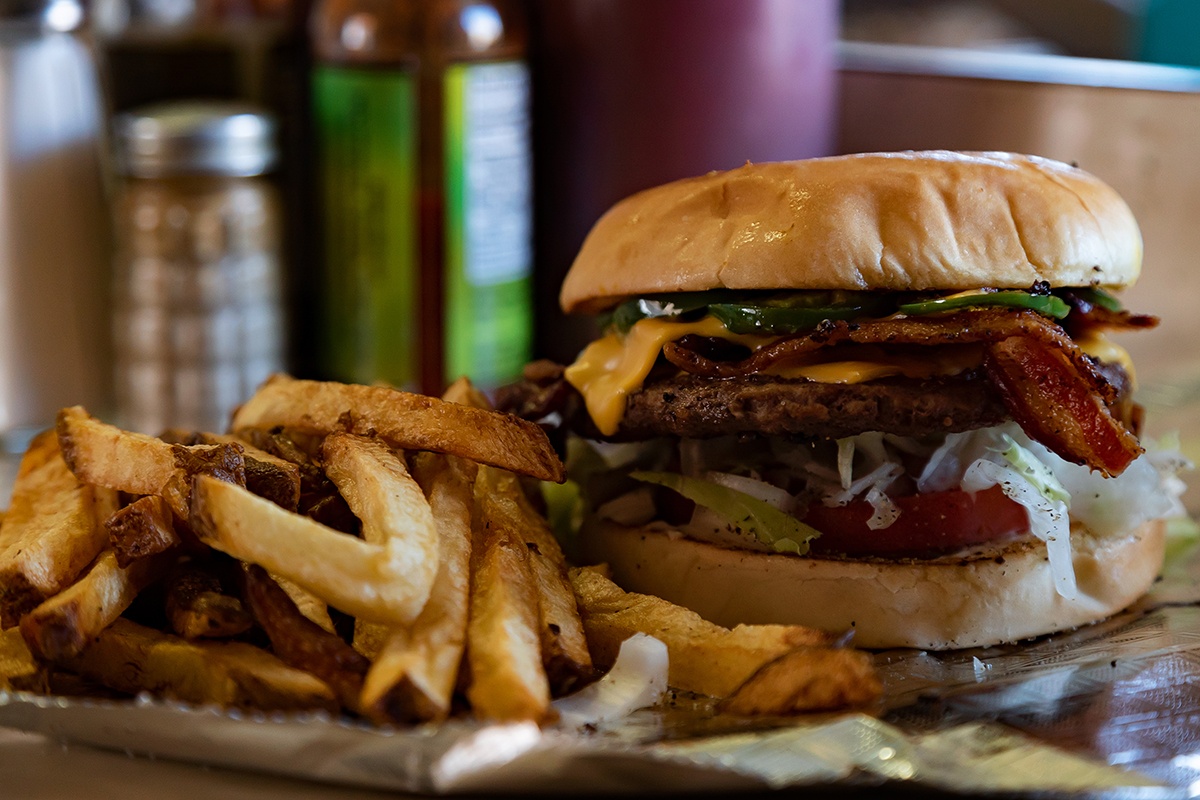
Web Extra: The Burger Bar lets you customize your order. Owner Katy Grantges says that bacon and jalapenos are some of the most popular add-ons.
Chris Salazar | TEC
After lunch, a mural near Cleburne’s square depicting historic local sites and events guided my exploration. Created by Texas artist Stylle Read, it features a gleaming, steaming locomotive that commemorates the railroad’s local impact.
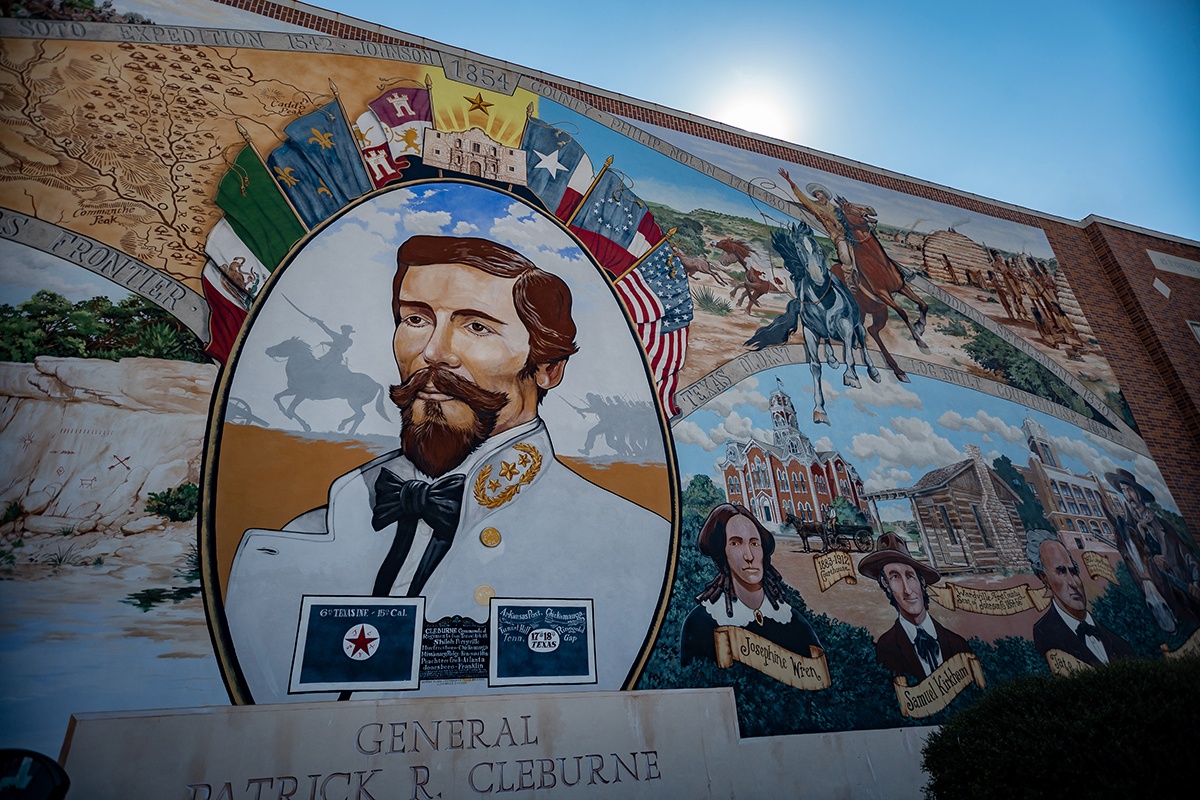
Web Extra: Stylle Read’s murals bring colorful depictions of Cleaburne history to many walls around town. The largest piece, downtown, is a portrait of the town’s namesake, Confederate Gen. Patrick Cleburne.
Chris Salazar | TEC
The Cleburne Railroad Museum tells the story of the rail lines and repair shops that served as the city’s largest employer for nearly a century. Attired in a dapper conductor’s uniform, R.A. McAlister told me the story of the Santa Fe Railroad establishing machine shops in Cleburne when its Galveston headquarters were quarantined because of yellow fever in 1898.
“When the train left Galveston heading north, looking for a place to set up temporary offices and shops, every community it stopped at greeted it with shotguns and ‘keep moving’ commands,” said McAlister. “But when they reached Cleburne, the mayor met them with a brass band. It was a sad day here in 1989 when they closed the shops.”
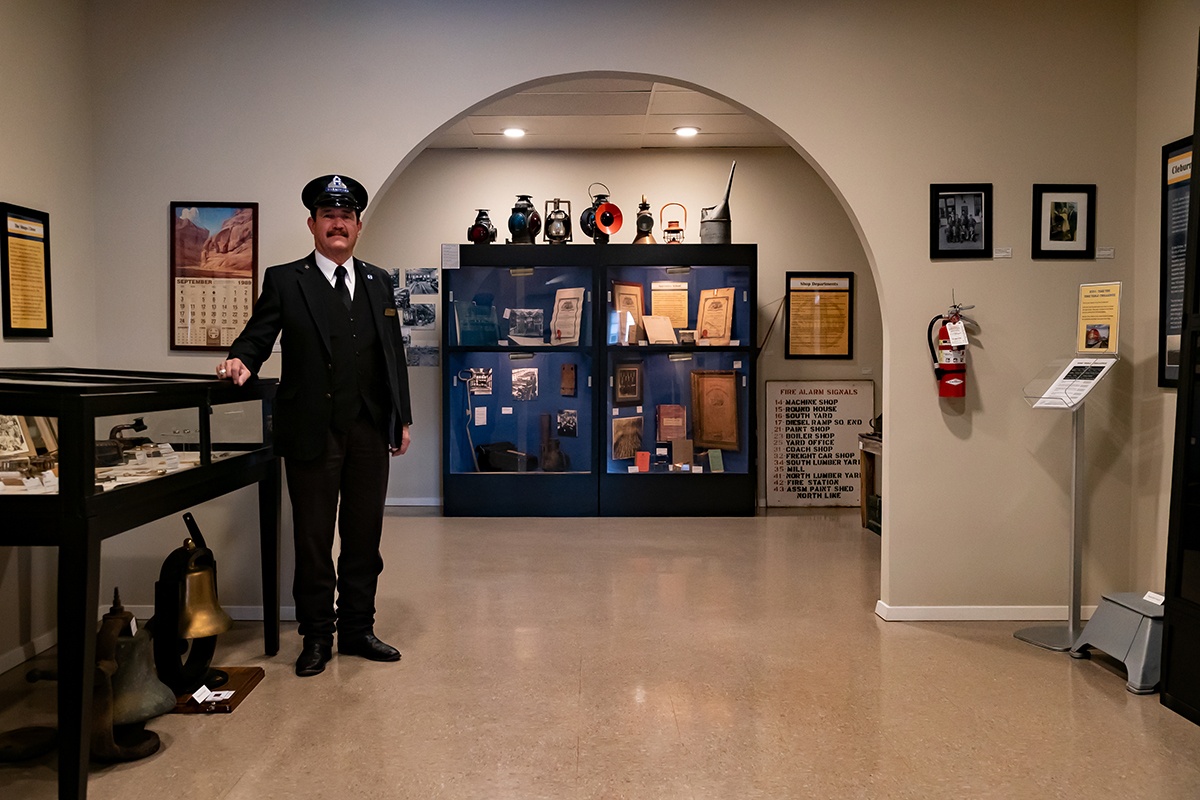
Web Extra: R.A. McAlister can be found in full conductor uniform at the Cleburne Railroad Museum. Recently retired from Lockheed Martin, McAlister also worked at the Cleburne Santa Fe Railroad machine shop before it closed.
Chris Salazar | TEC
Read’s action portrait of baseball great Tris Speaker recalls the Hall of Famer’s first team, the minor-league champion Cleburne Railroaders of 1906. A reborn Railroaders club took to the field of dreams in 2017, playing home games at a sparkling new park called the Depot at Cleburne Station.
The mural includes rangy longhorns and a rangier cowpoke that evoke a cattle drive route west of town that was known as part of the Chisholm Trail. Johnson County’s original log cabin courthouse, built in 1854, still stands among the pioneer buildings in Cleburne’s Chisholm Trail Outdoor Museum.
Caddo Indian settlements depicted in the mural inspire a visit to the Big Bear Native American Museum and to the Layland Museum.
In a 1905 Greek Revival structure built as a Carnegie library, the Layland houses the collection of plumber William J. Layland, who took time off every summer to gather relics. Among the hundreds of artifacts, you’ll see Hopi katsina figures and a late reservation-era Lakota beaded buckskin dress.
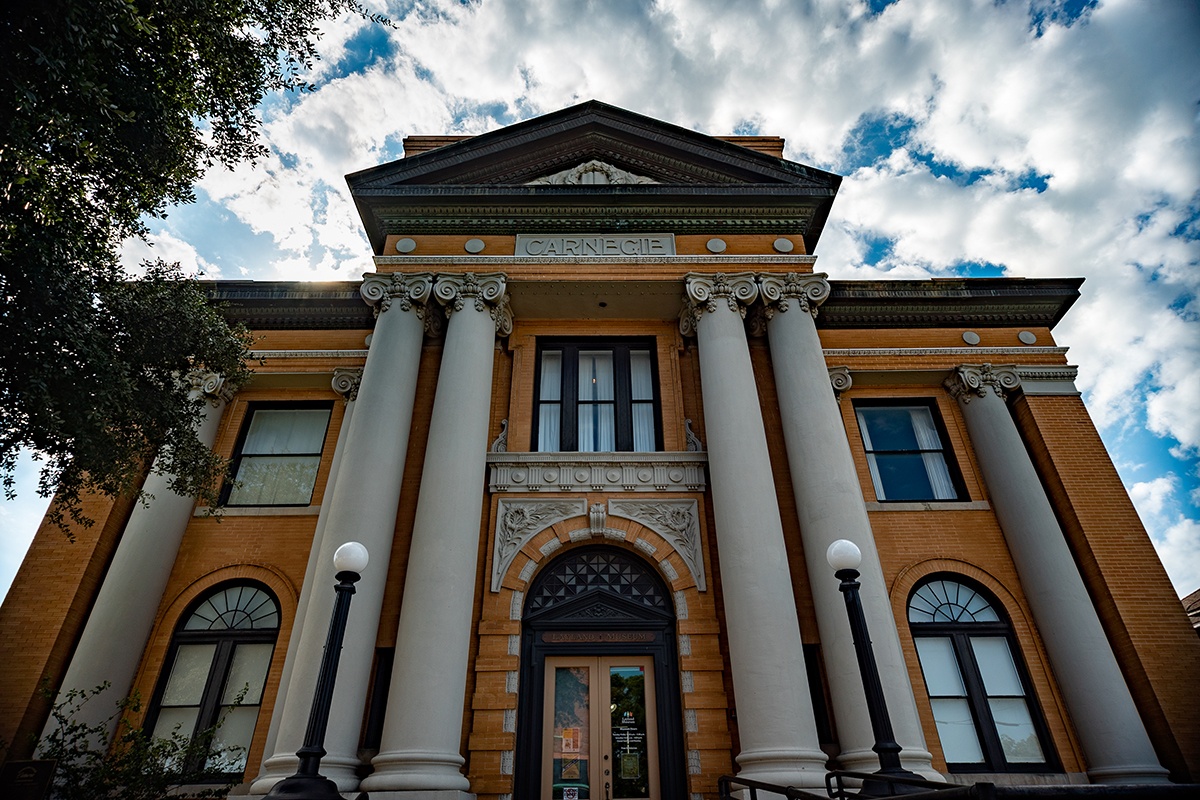
Web Extra: The Layland Museum is located inside the 1905 Carnegie library building. The Greek Revival building is one of only 12 Carnegie libraries still standing in Texas.
Chris Salazar | TEC
Mural work is a Read family signature, and until recently, Read’s father, Sleepy Read, painted in his publicly accessible studio in the Wright Building, a mini-mall near Stylle’s mural. Another stop on the square, the Published Page bookstore, specializes in vintage sci-fi, Texana and Western history.
Sleepy Read’s mural adorns the hallways of the J.N. Long Cultural Arts Complex, a former public school built in 1915. The complex offers changing exhibits and serves as the permanent home of the Texas Woodcarvers Guild Museum.
A scene at Buffalo Springs in Stylle’s mural sent me back to a favorite Cleburne spot, a brick-lined spring on Buffalo Creek, right off U.S. 67, where indigenous people and wildlife came for water, followed by explorers, soldiers and pioneers. Even Sam Houston is said to have visited the spring.
“The creek transports the spirits of those who take the time to listen and see the great blue herons, sunfish and other wildlife,” said Julie Winchell, city environmental coordinator. “Buffalo Creek is a treasure.”
Author Gene Fowler specializes in Texas travel and history.
